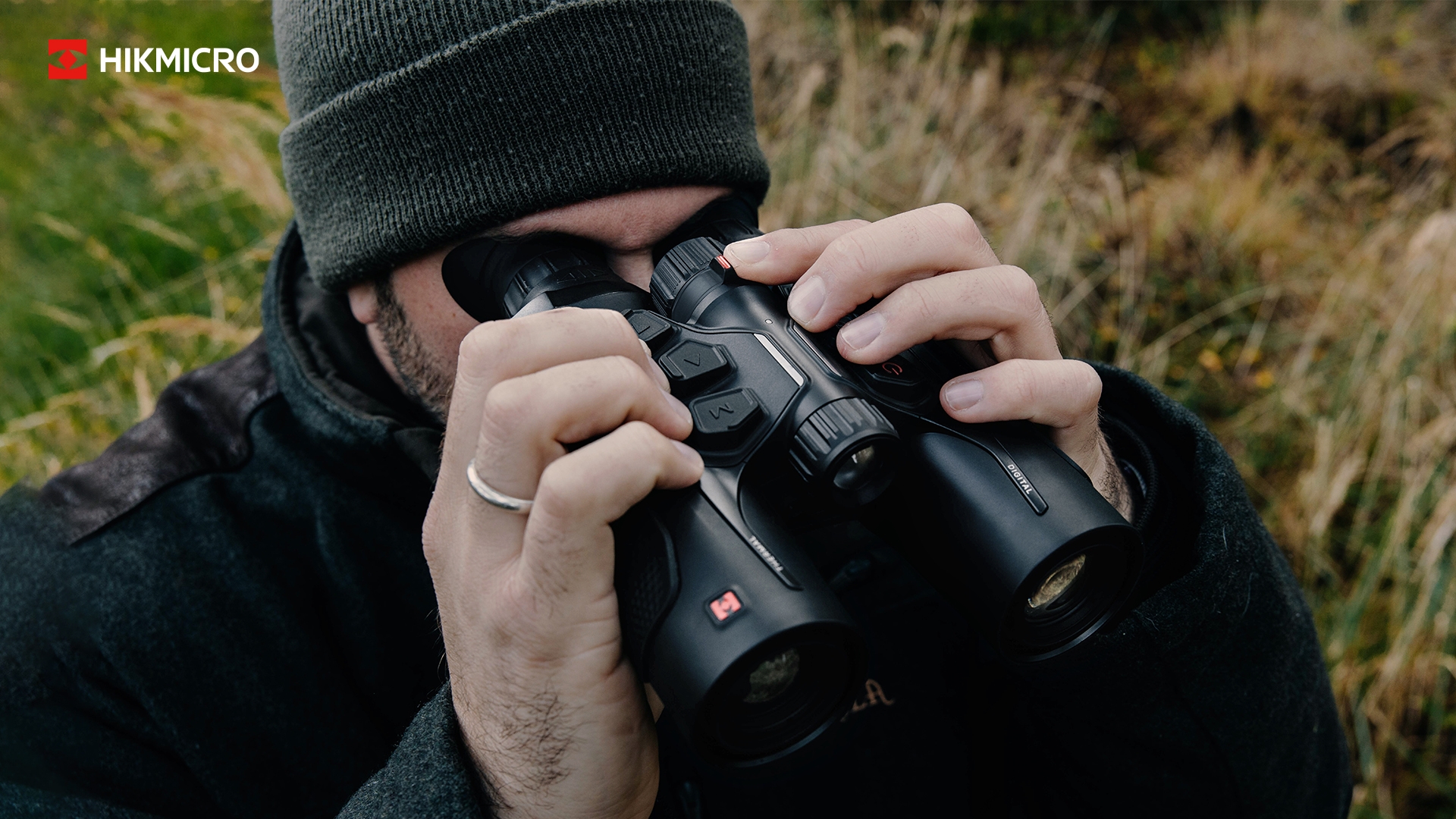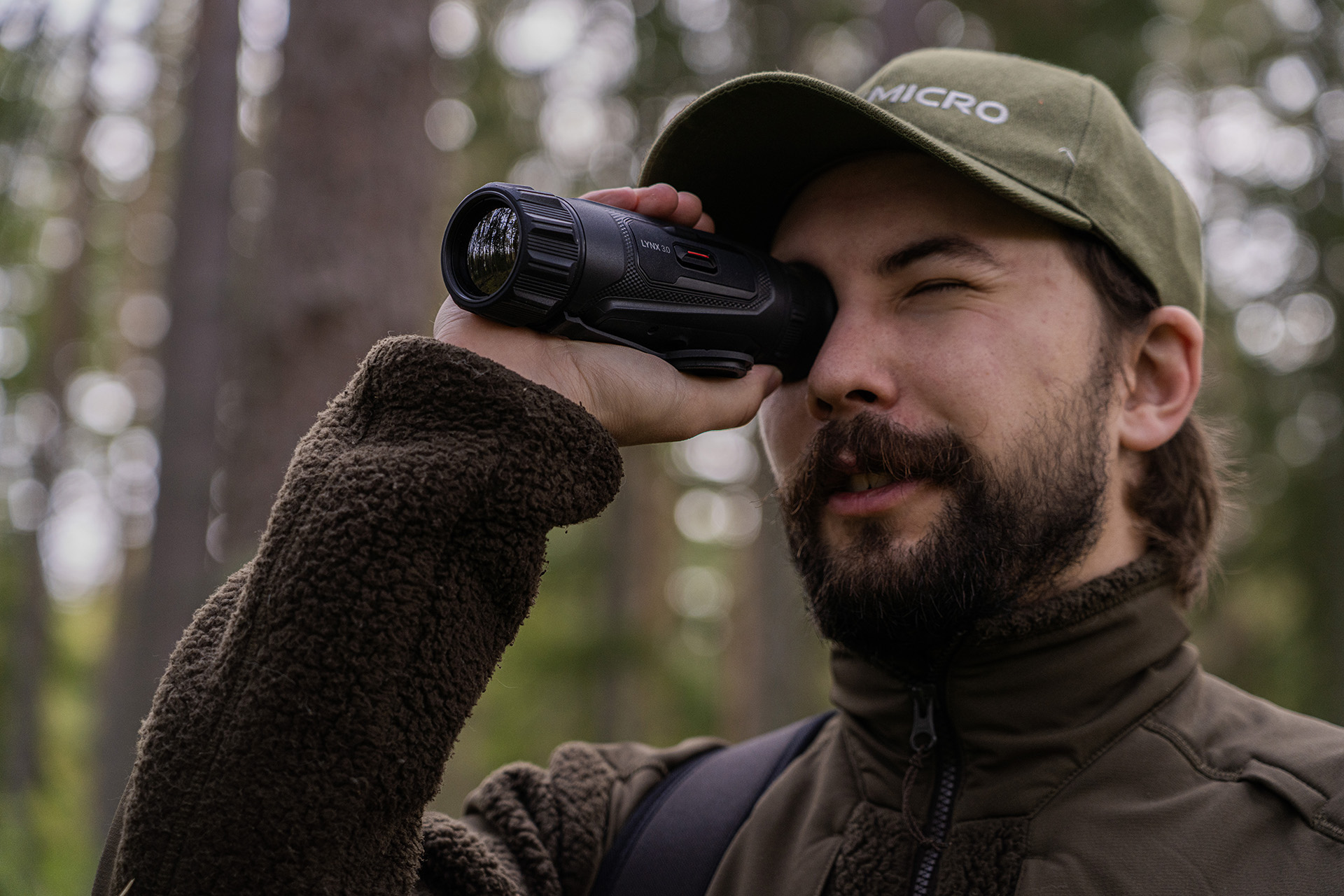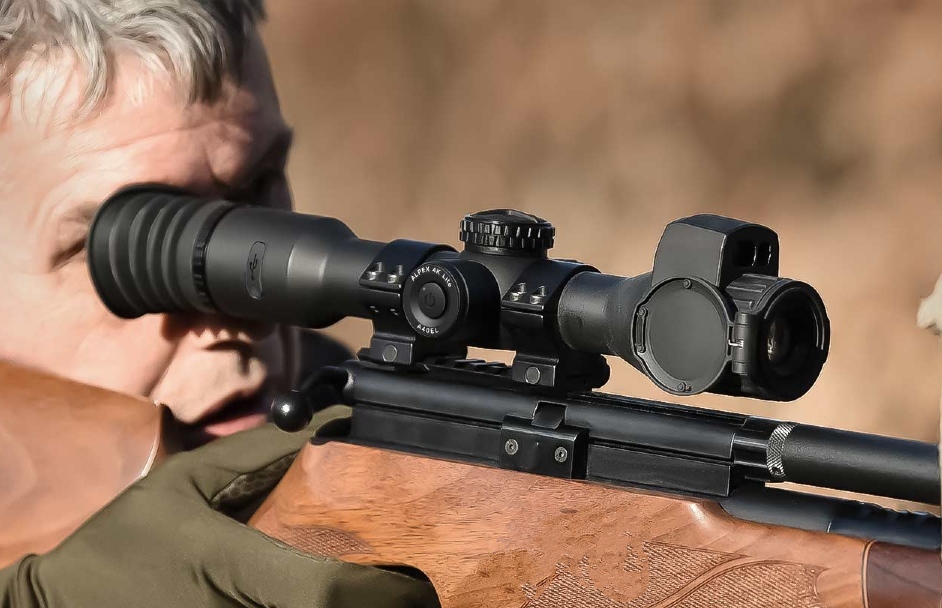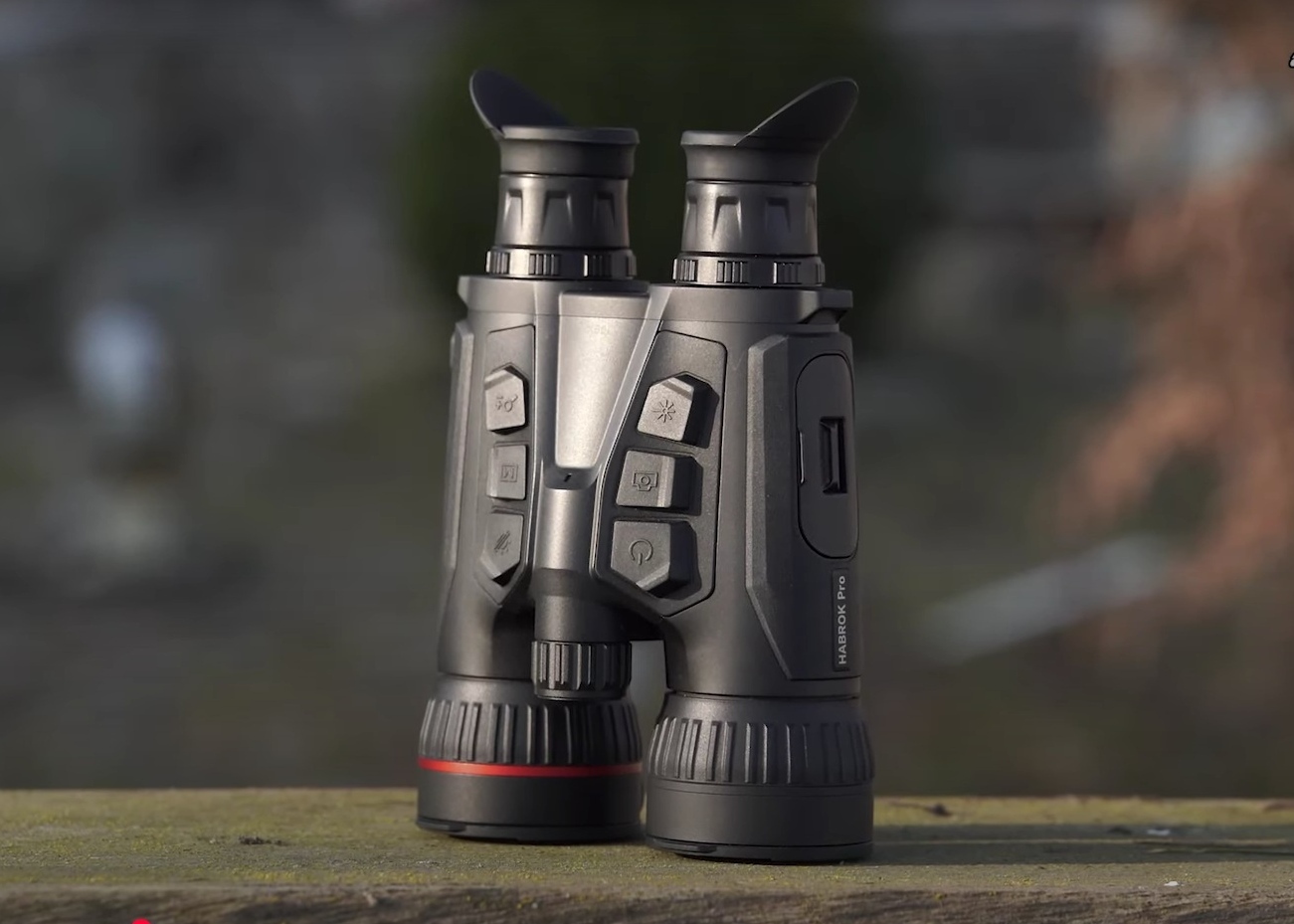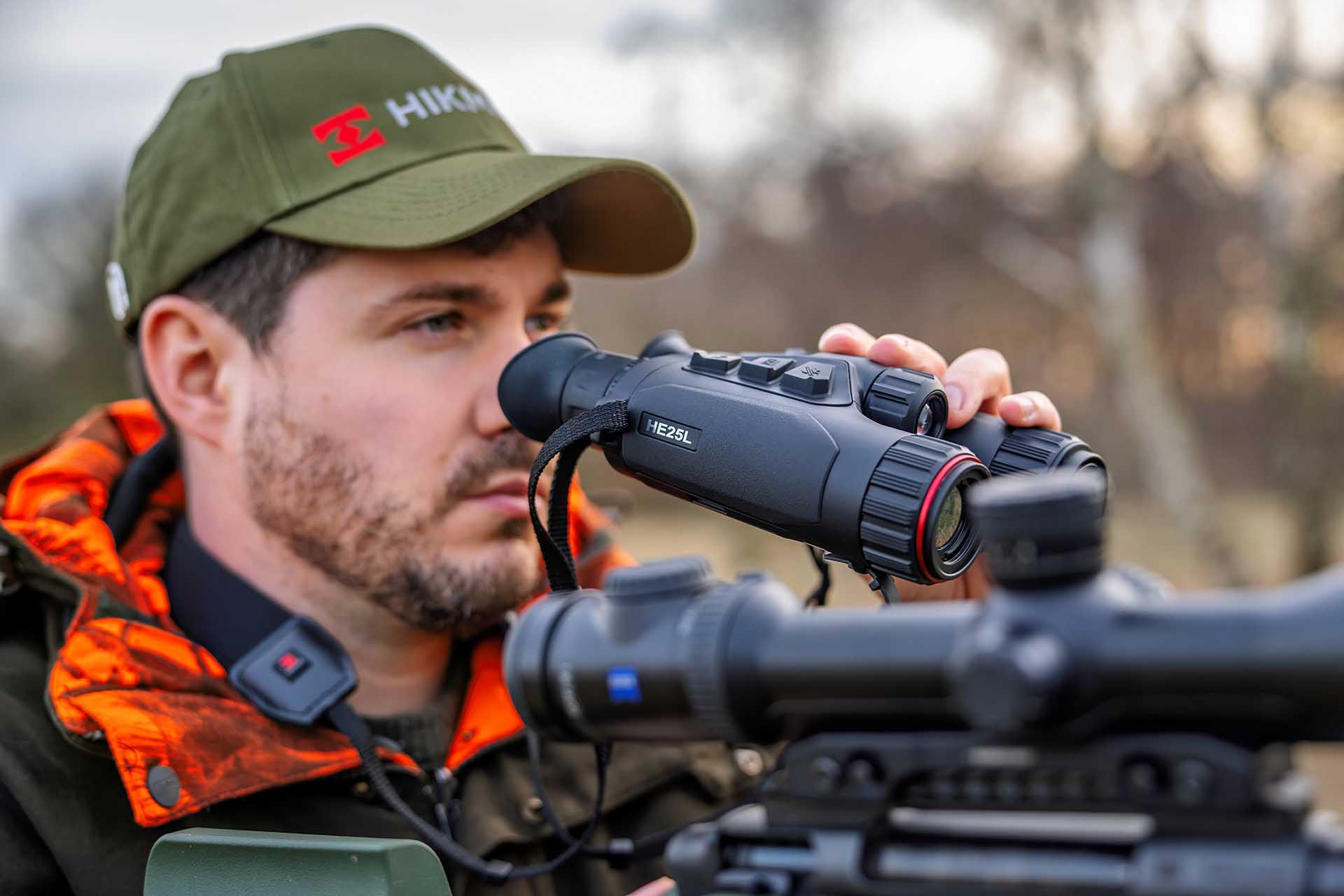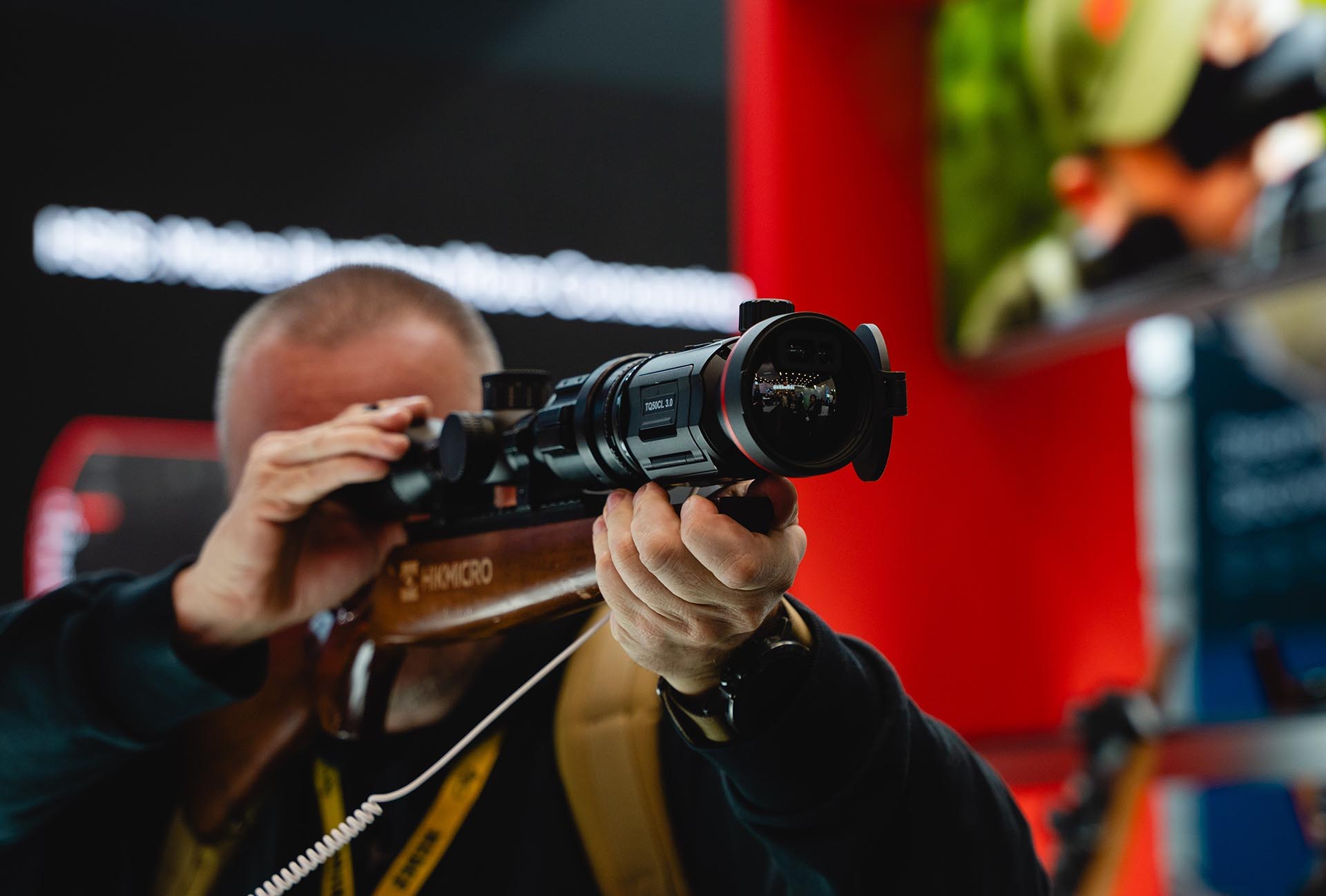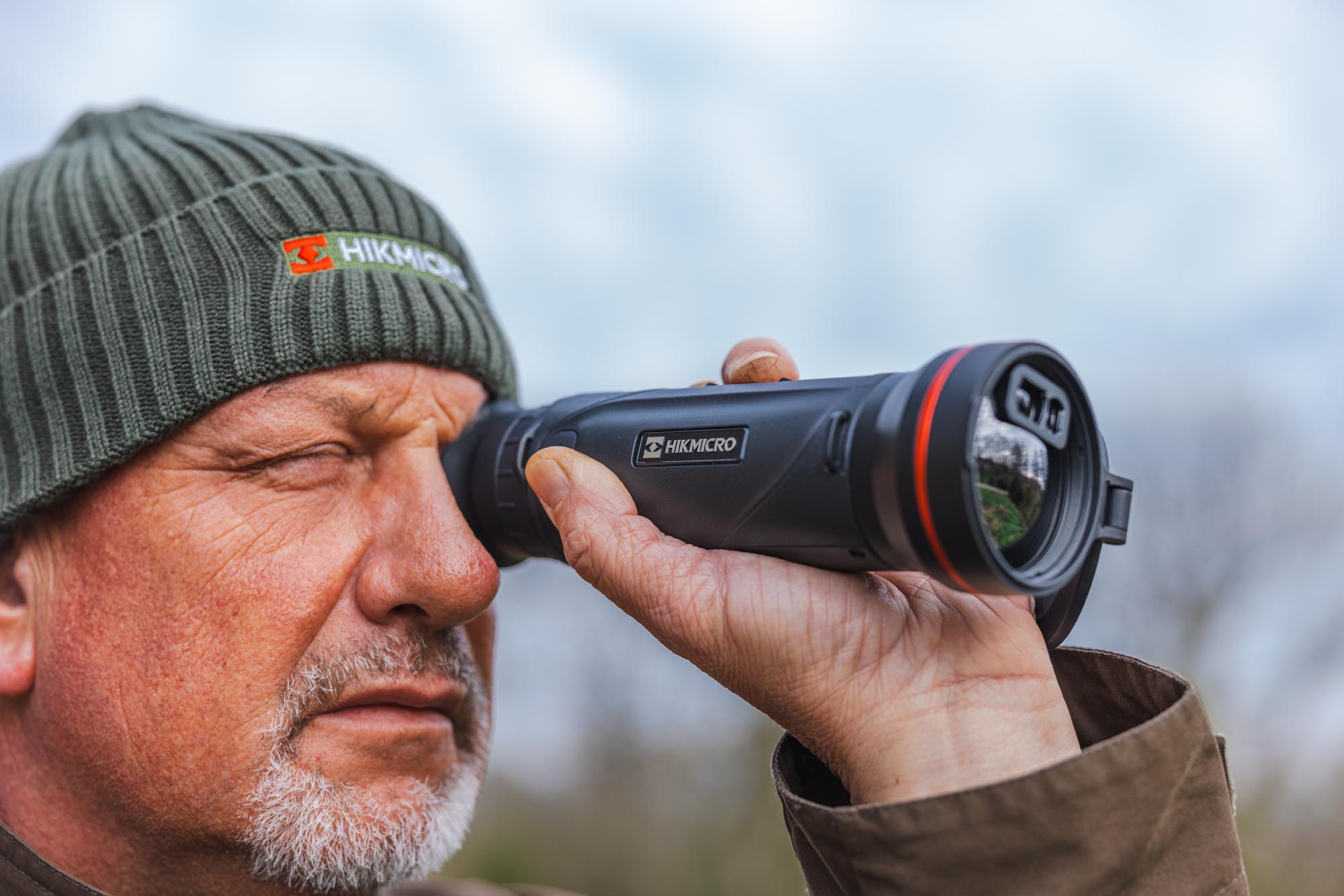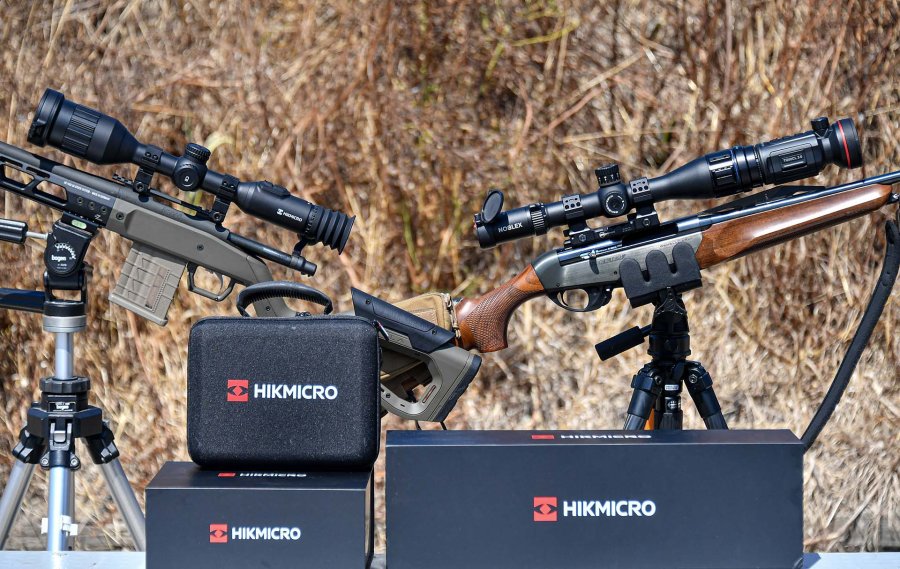
Thermal imaging devices have increasingly gained popularity among hunters in the last decade, becoming a must have and a sort of holy grail of hunting optics. I will not repeat here what is already all said and done about the technology – but there are some definite trends and device typologies that have emerged on the market.
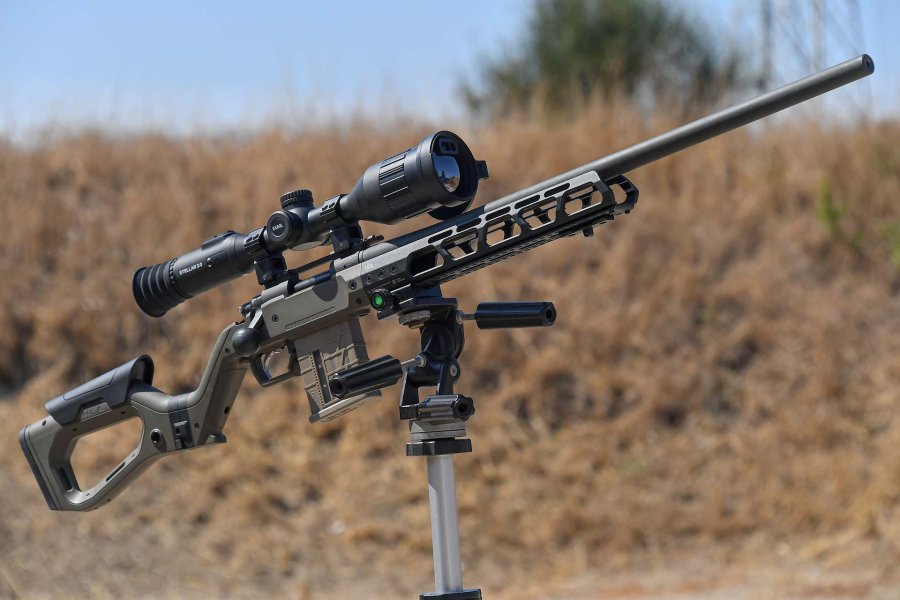
And in regards to aiming optics, two thermal imaging devices have established themselves: the proper and self-contained thermal imaging riflescope, also called TWS (from military terminology, meaning Thermal Weapon Sight), and the thermal imaging clip-on converter, aka TCS (Thermal Clip-On Sight), to be used in front of a traditional daytime riflescope.
Let’s see pros and cons, using two devices that are representative of each optic category, a Thunder 3.0 and a Stellar 3.0 from HIKMicro. The Thunder is a clip-on, while the Stellar is a TWS, a thermal riflescope.
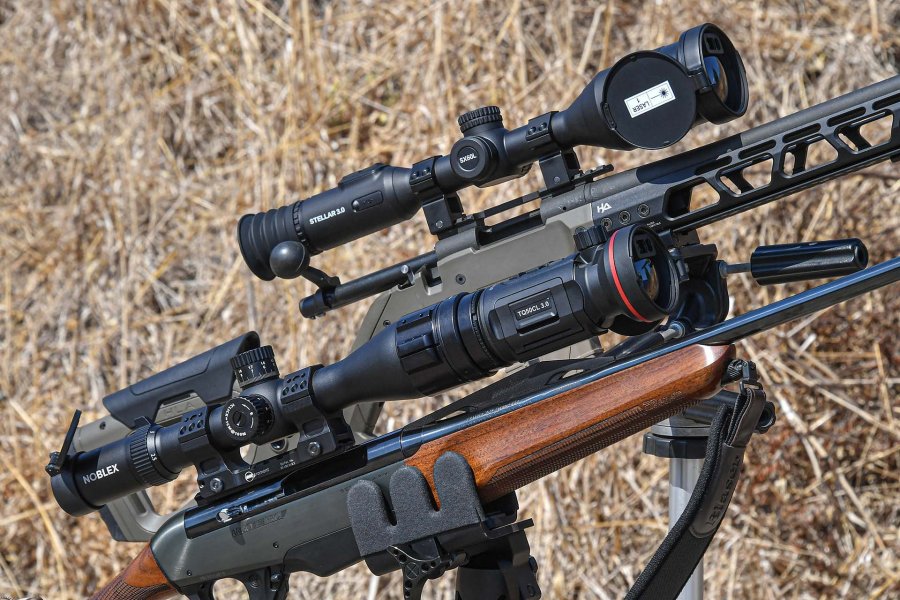
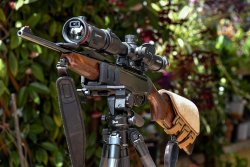
Obviously, maximum flexibility is given by the Thunder: having a hunting rifle already setup with a properly mounted and zeroed daytime riflescope, such as the Noblex NZ8 Inception variable magnification scope that we mounted on the Benelli rifle for our tests, allows us to hunt 24/7 and according to the hunting conditions, and our correct setup of the clip-on software, use thermal imaging observation and aiming capability without touching the zero of the scope.
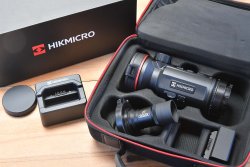
Plus, the clip-on can even double as a handheld observation device when not mounted, allowing to observe in thermal imaging the hunting field without pointing a firearm toward the viewed area – a definite safety advantage.
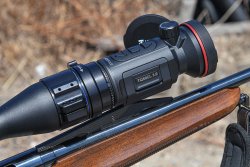
However, most daytime scope variable magnification range is quite high – in our case it goes from 2.5 all the way to 20x, and to avoid losing too much resolution we can't crank up magnification too much – remember we are looking at a OLED display and as we zoom in, pixels become more and more visible.
With the 640x480 sensor resolution of the Thunder 3.0, and the fact that the clip-on has no magnification, zooming up to 8x from base 2,5x is, in our opinion, the limit for best performance.
Overall quality can also be a challenge, since as good as the daytime riflescope is, and our Noblex is no slouch, it adds a lot of glass in between the thermal imaging internal OLED display and the eye of the user.
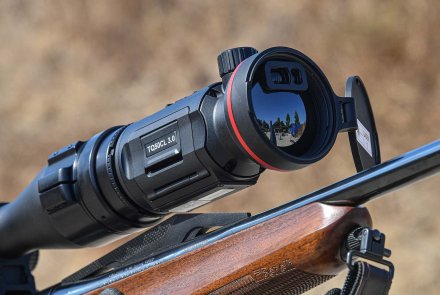
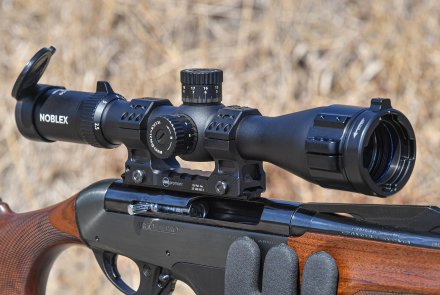
Another disadvantage is that a clip on is mounted in front of the daytime riflescope, using an interface fastened on the objective bell, and adds it length and weight in front of the scope and makes the gun very much muzzle heavy, increasing its bulk substantially.
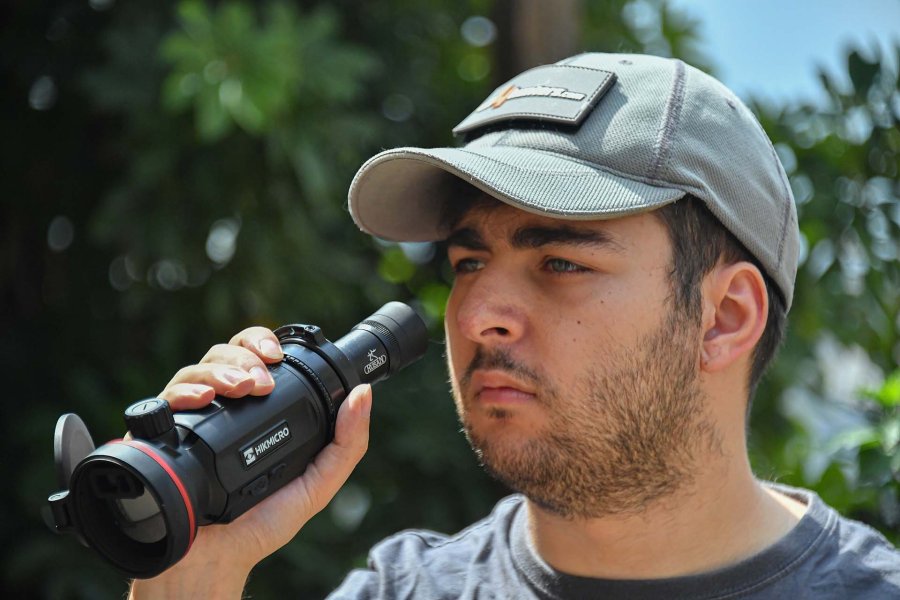
On the other hand, a dedicated thermal vision aiming optic setup, using for example a Stellar riflescope, allows to have the highest accuracy and the longest range due to the much higher sensor resolution self-contained, dedicated TWS optronic scopes are generally able to provide on the top end models. In this case, the Stellar offers 1280x1024 versus 640x480 of the Thunder, and therefore offers much higher useable magnification – literally, the Stellar features double the magnification with the same apparent resolution. And, as mentioned, dedicated TWS offer the best overall optical performance, due to not having to relay on external additional optics, and only use optimized eyepieces to observe the same internal OLED display.
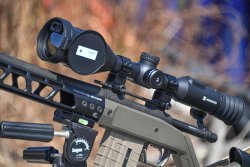
Most thermal imaging riflescopes today resemble the ergonomics, appearance and ease of use of daytime riflescopes and share the same tube mounting interfaces, allowing the use of standard Picatinny bases and 30-mm rings to mount the TWS on the hunting gun, sometimes sharing standard glass size and weight, too.
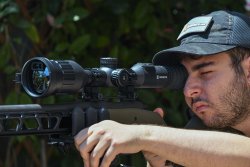
Cons, of course, include mainly the fact that you need to have a second rifle that’s specifically dedicated to thermal imaging hunting, and limited flexibility as it can't be easily used as a handheld observation device, and exchanging a daytime optic on this gun is neither easy, practical or fast, in the field.
So, the choice boils down to jack of all trades, with visible/thermal all round capabilities and maximum flexibility of the daytime optic plus clip-on attachment, or best overall performance, range and accuracy with a dedicated setup with a TWS?
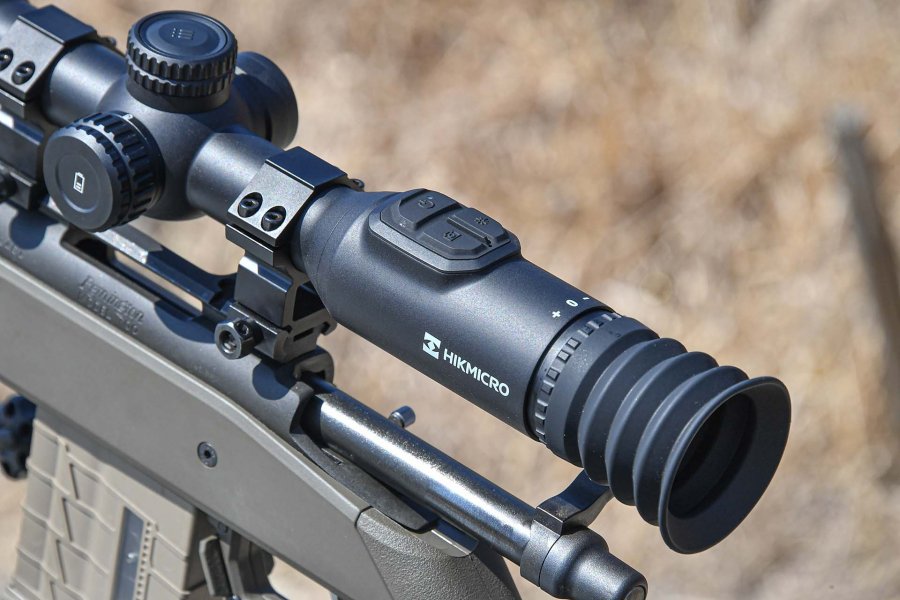
Well, yes and no – of course it also depends on your style and type of hunt, but there’s also the regulatory point of view, and the lawful use of night vision or electronic enhanced optics on firearms. In this regard, EU is not uniform in the allowed use of thermal imaging. In Germany, for example, while handheld thermal and night vision optics are generally always permitted, using a riflescope mounted on a gun is strictly illegal for the average hunter, and clip-ons are a grey area that can be allowed in many German regions while not allowed in others.
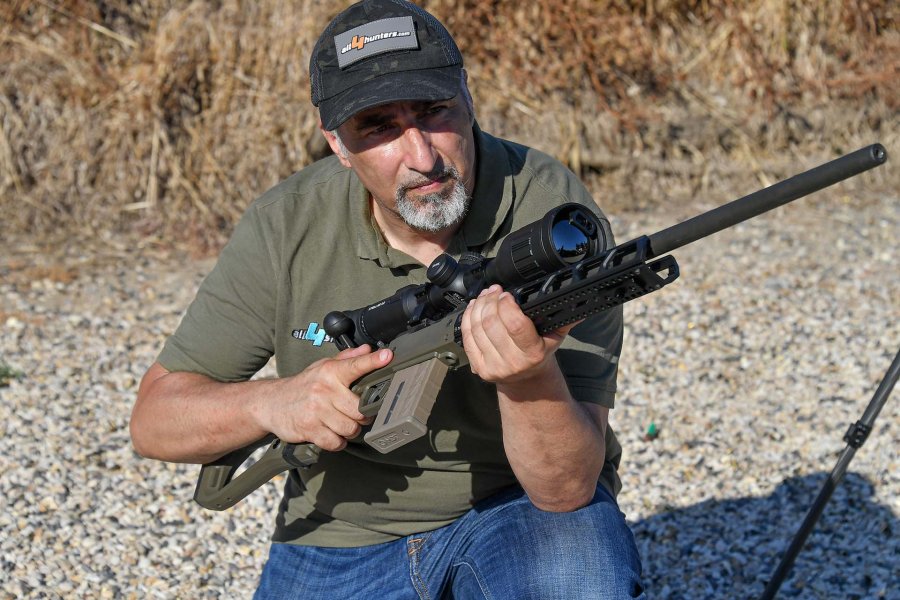
In Romania, no night vision or thermal imaging is legally allowed. In Italy, both riflescopes and clip-ons are allowed, but there’s a very strict hunting law regulating exact hours in which hunting is allowed. Also, while in some counties it is legal to use thermal imaging riflescopes, clip-ons, or both, it may be limited to specific game or hunt types – so, apart from choosing either a clip-on or riflescope, when traveling to enjoy the hunting season in neighboring EU countries be sure to check local legislation and export regulations first.
If you want to know more, keep following all4hunters.com!


